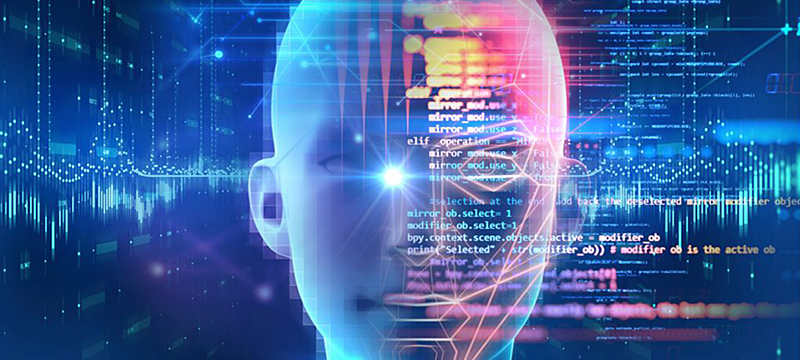The combination of generative AI (GenAI) and the Internet of Things (IoT) holds the potential to reshape the future of technology and drive unprecedented innovation.
GenAI promises to revolutionize the IoT ecosystem by enhancing security, personalization, anomaly detection, on-device machine learning, and network management.
As these areas continue to evolve, businesses and individuals are ready to benefit from the innovative applications of GenAI. In this article, we’ll explore the many ways GenAI is beginning to transform the IoT landscape and examine the future possibilities of this powerful alliance.
Creating Synthetic Data for Machine Learning
One of the main challenges in developing machine learning models for IoT devices revolves around collecting and labeling massive amounts of data. However, GenAI solves this problem by creating synthetic data to train these models.
This synthetic data can be used to simulate a variety of scenarios, including machine failures. For example, a manufacturing company can use GenAI to create synthetic data that represents different machine failure scenarios. The company can then use this data to train machine learning models to anticipate potential problems in advance, enabling predictive maintenance.
Crafting Personalized Experiences
GenAI enables IoT devices to deliver personalized experiences to users by leveraging its ability to generate new and original content. Smart home systems can use GenAI algorithms to create personalized lighting and temperature settings for individual users, enhancing comfort and convenience.
And wearable devices can use GenAI to offer tailored workout recommendations based on an individual’s fitness goals and preferences. By leveraging user data from surveys, interactions, and sensor inputs, GenAI can create unique and personalized experiences tailored to the specific needs of each user.
Improving Anomaly Detection
Anomaly detection is key to ensuring the reliability and security of IoT networks. GenAI has the ability to greatly improve anomaly detection by creating synthetic data that accurately simulates normal operating conditions. By training machine learning models on this synthetic data, IoT devices can effectively identify and flag irregular events in real time.
For example, an operator of a power grid can use GenAI to generate synthetic data that mirrors typical power consumption patterns. The power grid operator can then use that data to train a machine learning model that can detect sudden spikes or irregularities in power consumption, enabling the operator to take proactive measures to prevent potential failures or security breaches.
Enabling On-Device Machine Learning
The combination of GenAI and IoT introduces exciting prospects for on-device machine learning. GenAI tackles the issue of limited computing resources in IoT devices by creating smaller and more effective machine learning models.
Anomaly detection models, for instance, can be optimized and implemented directly on IoT devices, enabling real-time analysis and decision-making without depending on cloud resources. This reduces latency as well as strengthens data privacy and security by reducing the need to send data to external servers.
Automating Network Management
Managing large-scale IoT networks requires intelligent automation. GenAI can be instrumental in automating different areas of network management, including configuring devices and optimizing network traffic. With its generative abilities, GenAI can automatically set up new devices as they join the network, simplifying the onboarding process.
Additionally, GenAI can enhance network traffic by intelligently directing data through the most efficient routes, reducing latency and maximizing the use of available bandwidth. This automation lessens the workload of network administrators and boosts the performance and efficiency of the network.
Potential Future IoT Applications
As GenAI continues to evolve, the possibilities for its integration with IoT are endless. Some potential applications include:
Creating New Types of IoT Devices: GenAI can facilitate the development of innovative IoT devices, such as smart assistants with natural language processing capabilities. These devices will be able to understand and respond to human commands and queries, revolutionizing the way we interact with technology.
Enhancing User Interactions: GenAI can enable new ways to interact with IoT devices, including gesture recognition and voice commands. This will make technology more intuitive and accessible, improving the user experience.
Improving Security and Reliability: GenAI can assist in developing advanced security measures for IoT networks, effectively mitigating cyber threats and ensuring data privacy. By generating synthetic data to train anomaly detection models, GenAI can help identify and prevent security breaches in real-time.
Democratizing IoT Access: GenAI has the potential to help bridge the digital divide by making IoT devices more affordable and accessible and allow more people to benefit from the advantages of intelligent connectivity. Democratizing IoT access will allow businesses and individuals to take advantage of IoT technologies for various applications and industries.
Conclusion
The integration of GenAI and IoT has the potential to totally transform how we interact with and benefit from intelligent connectivity. By leveraging GenAI, businesses and individuals can unlock a wide array of applications, ranging from improved anomaly detection and personalized experiences to on-device machine learning and network management automation.
As the field continues to evolve, it’s vital that we embrace the possibilities presented by GenAI and explore its potential to transform IoT. The future of GenAI in IoT is bright, promising a new era of intelligent connectivity and unprecedented opportunities for innovation.
The post Bringing the Power of GenAI to IoT appeared first on IoT Business News.






























